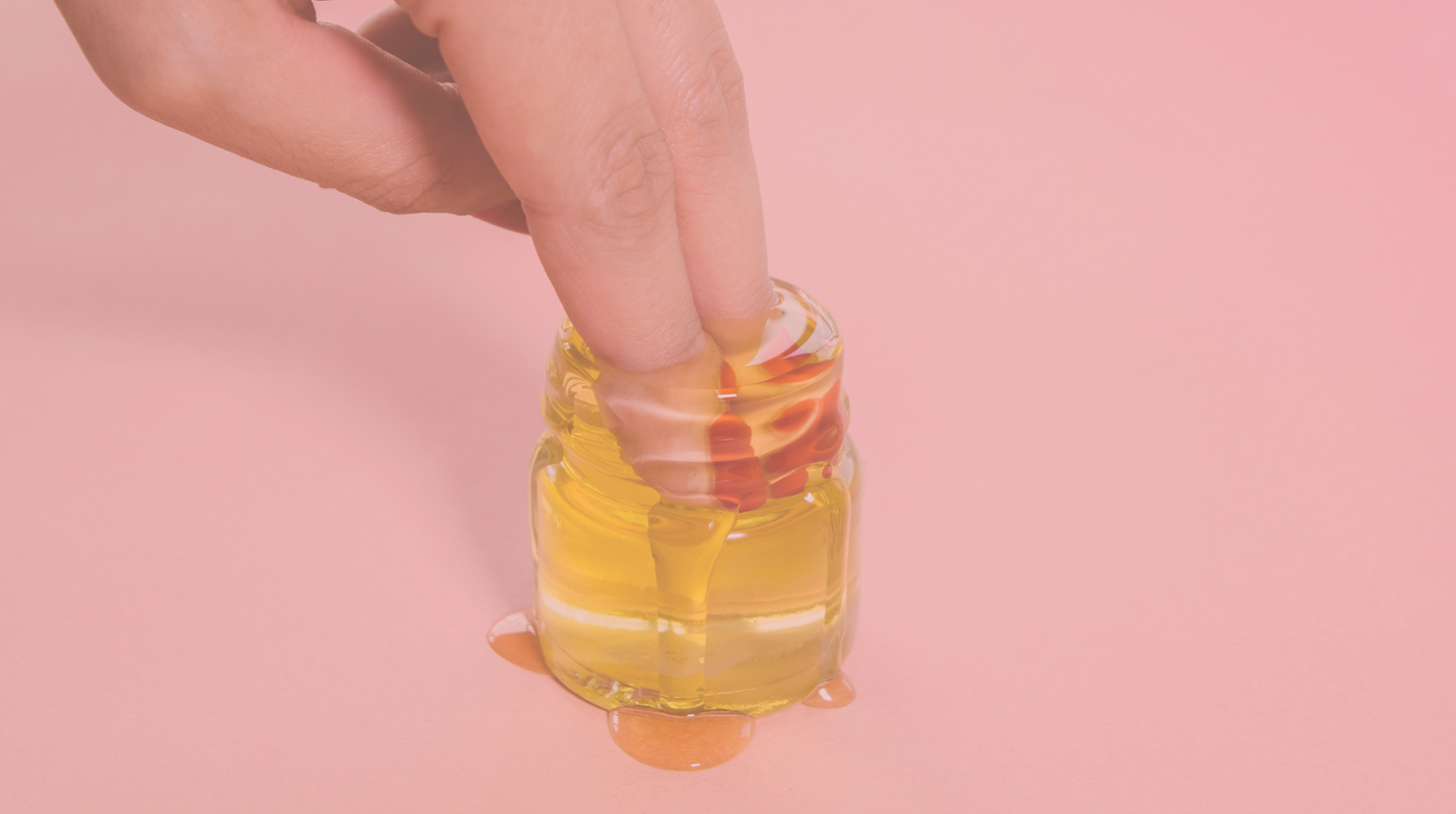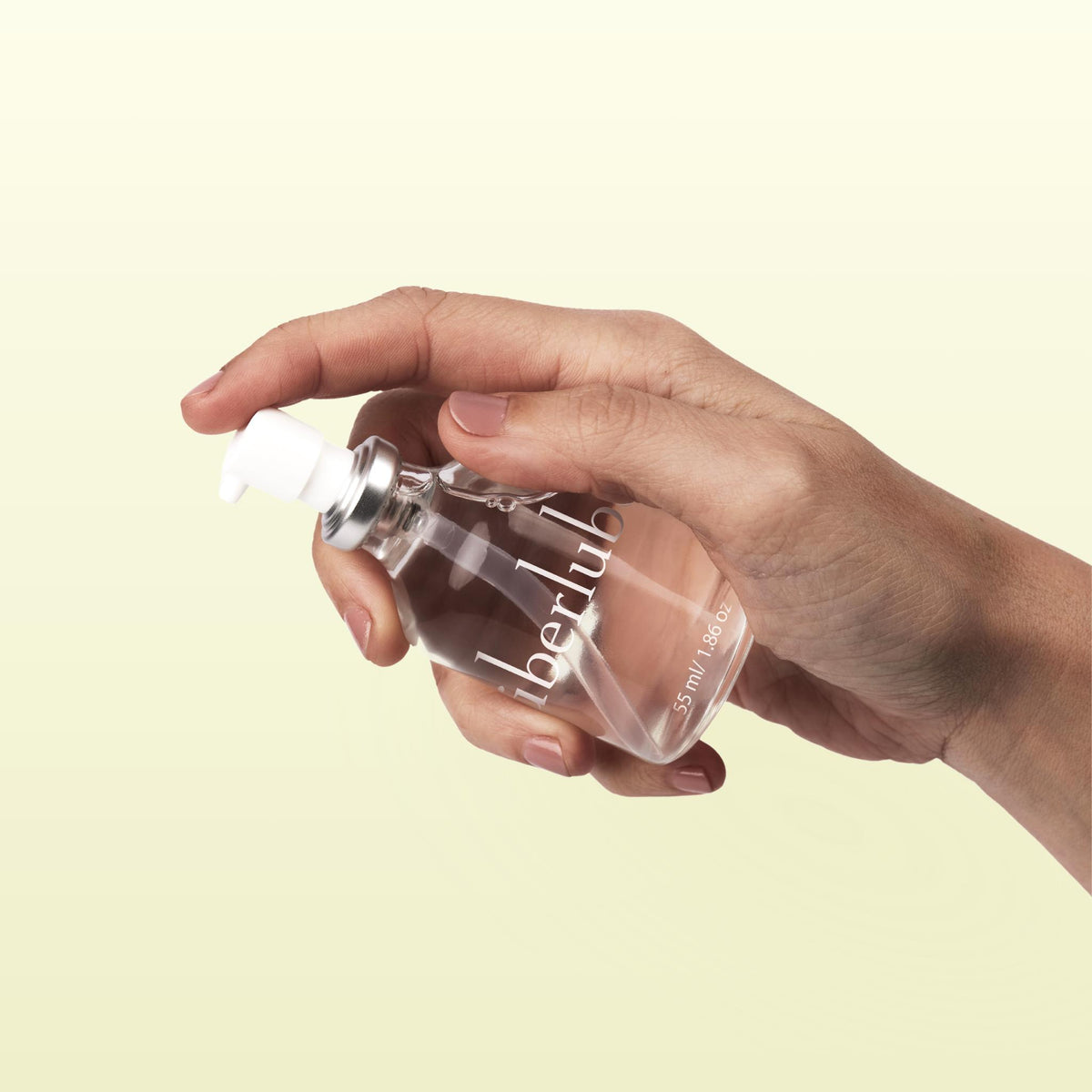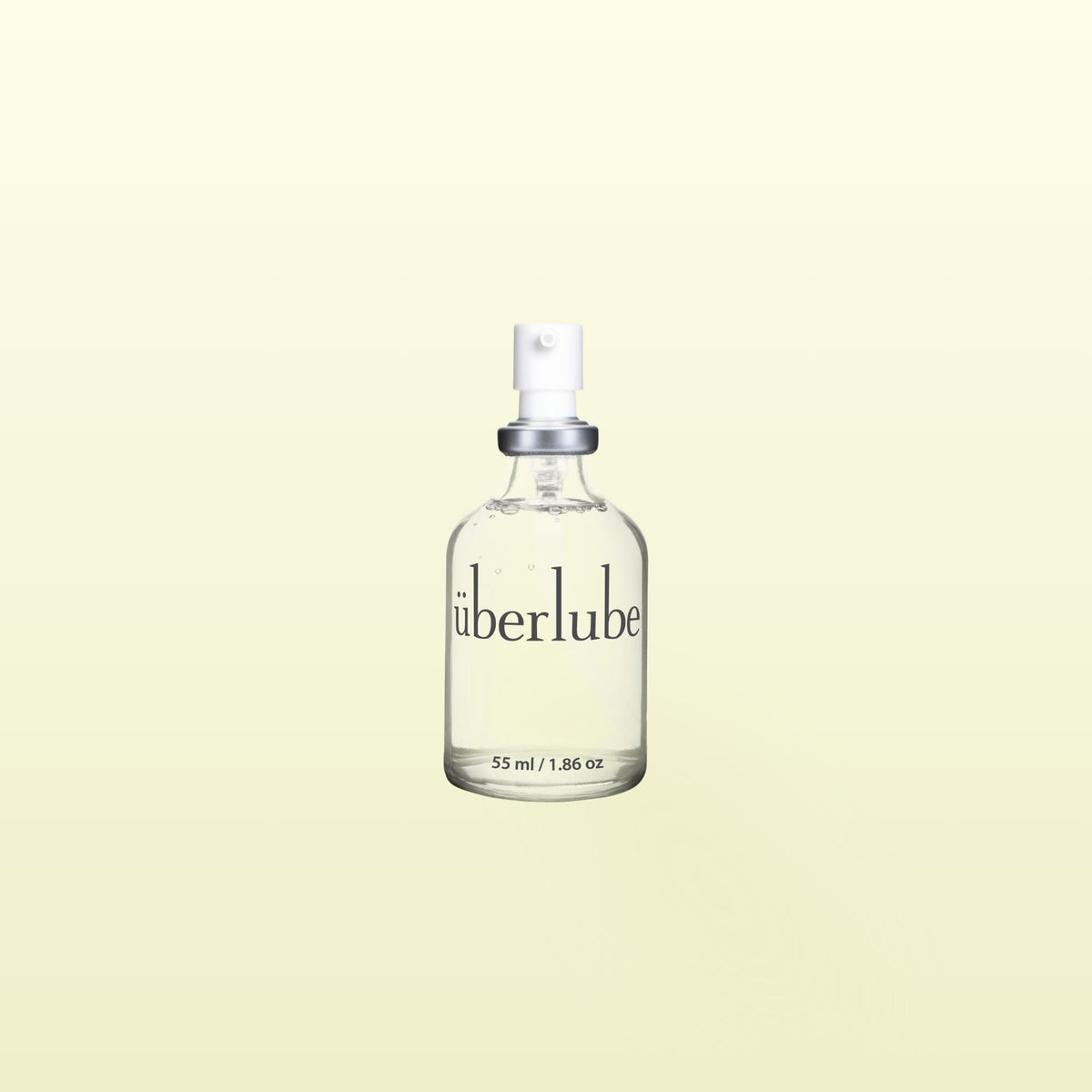Deciding who you share bodily fluids with can get a bit complicated. It's not a one-size-fits-all kind of deal, and everyone has their own take on it. We're talking about the good ol' birds and the bees, but with a twist — there are some risks to consider, like sexually transmitted infections (STIs) and baby-making potential.
The concept of fluid bonding may seem straightforward, but it can mean different things to different people, says sexologist and inclusivity educator, Lilithfoxx.
"Fluid bonding is often a sign of trust, intimacy, and a deeper emotional connection within a relationship,” says Lilithfoxx. “Some folks who practice consensual non-monogamy consider fluid bonding as ‘graduating’ from a more casual dynamic to a serious relationship.”
In this article, we'll dive deep into fluid bonding, the risks, and, most importantly, how to do it safely and with consent.
What is fluid bonding?
Fluid bonding is a consensual, pre-agreed-upon decision to stop using protection (e.g., condoms, oral dams or dental dams, etc.) and exchange bodily fluids during sexual activity.
Although the definition of this term seems cut-and-dry, fluid bonding can mean different things to different people.
For example, as AASECT-certified sex therapist and board-certified sexology diplomate Stefani Goerlich explains, some people may consider using certain porous or difficult-to-sanitize sex toys (e.g., jelly dildos, leather floggers, etc.) with a specific partner fluid bonding. Others may use the term more broadly to refer to any sexual activity (e.g., vaginal, anal, or oral sex) where bodily fluids are exchanged without protection.
What fluids are involved, exactly?
Fluid-bonded couples may share semen, vaginal fluid, and/or anal mucus during unprotected sex, whether penetrative or non-penetrative, including oral sex. Fluid bonding may also involve the exchange of blood (through minor abrasions or menstrual fluids) and saliva.
Blood play is a kink and isn't considered a part of fluid bonding. This also goes for golden showers (urinating on another person for sexual gratification), cum or semen fetishes, scat (using feces in sexual activities), and other forms of play involving bodily fluids, including fantasies or roleplay.

Is all unprotected sex considered fluid bonding?
No! Fluid bonding is a mutual and conscious choice to have unprotected sex and intentionally exchange bodily fluids with one or more partners. There is generally an explicit agreement that you will only share specific fluids with select partners. Whereas unprotected sex is often an impulsive, heat-of-the-moment act void of discussing sexual history or STI testing.
"Fluid bonding is typically used among polyamorous people to indicate that they're having unprotected sex with one partner while having protected sex (with condoms) with other partners," says Zachary Zane, author of “Boyslut: A Memoir and Manifesto” and sex expert for Momentum Intimacy. "You're more likely to use the words 'raw' or 'bareback' if discussing unprotected sex more broadly."
Is fluid bonding safe?
All sexual activity comes with some risk, whether you're in a monogamous or polyamorous relationship, using a barrier method, or are on birth control.
"Nothing is 'safe' when it comes to sex, which is why sex experts now use the phrase 'safer sex' as opposed to 'safe sex.' This acknowledges that there's always some level of risk," says Zane.
Fluid bonding increases the risk of transmitting sexually transmitted infections (STIs) and pregnancy. That said, there are some things you and your partner can do to reduce the risk, including getting tested regularly for STIs, using birth control, and discussing your sexual health openly and honestly with each other.
"Fluid bonding can be considered safe if both partners are tested for STIs and are aware of and comfortable with the risks involved," says Dainis Graveris, a certified sex educator and Relationship Expert at SexualAlpha. "It's also important to note that fluid bonding isn't a reliable method of preventing STIs or pregnancy and should be used with other forms of protection. Additionally, fluid bonding is not recommended for people at a higher risk of contracting STIs, for people with certain medical conditions or taking certain medications that make them more susceptible to infection," continues Graveris. "If you're considering fluid bonding, having an open and honest conversation with your partner and a healthcare professional is important to ensure you understand the risks and potential consequences."

Fluid bonding with multiple partners
Fluid bonding with multiple partners requires careful communication and risk management. Here are a few steps that can help ensure you and your partners are on the same page:
- Communication. Having an open and honest conversation with all partners is key to establishing expectations and understanding everyone's comfort levels.
- Frequent testing. Regular testing is a must for anyone in a fluid-bonded relationship, especially if you have multiple partners. "If you're having sex with other people, even with condoms, you should still get tested,” says Zane. “Condoms don't protect against all STIs. Not to mention that you can get oral gonorrhea or chlamydia if you go down on someone without a condom.”
- Consent. Consent is crucial in any sexual relationship, but it becomes even more important in a fluid-bonded relationship where the risk of STIs and pregnancy is higher. "First off, make it clear. I cannot tell you the number of people who have reached out to me surprised that their partner was not wearing condoms with other partners,” says Zane. “But the thing is, they never actually had a formal talk about it. They just assumed. You should not be assuming. This should be a larger sit-down conversation,” Zane adds. “Additionally, don't lie if you make mistakes and have unprotected sex with someone else — that's putting your partner's health at risk.”
- Safer sex practices. Even when fluid bonding is practiced within the relationship, it's important to use condoms or other barrier methods (like Lorals!) when engaging with outside partners. "There's still some risk here, particularly for the transmission of skin-to-skin STIs like herpes and HPV," says Sarah Melancon, PhD, certified sexologist and Sexuality and Relationships Expert for SexToyCollective.com. "Condoms can break, so any sexual interactions outside the fluid-bonded relationship pose some risk to all parties."
- Risk assessment. Before entering a fluid-bonded relationship, everyone involved should assess their risks and comfort levels. This means being honest with yourself and your partners about your sexual history, testing practices, and overall health.

Fluid bonding with one or more partners while not fluid bonding with other partners
Fluid bonding with one or more partners, while not fluid bonding with others, can be a complex dynamic that requires clear, honest, and upfront communication. While the same guidelines apply for communication, frequent testing, and consent, there are additional considerations to keep in mind when navigating this type of arrangement.
- Boundaries. Creating clear boundaries between fluid and non-fluid bonding partners is essential to maintain trust and prevent misunderstandings. This means discussing and agreeing on who will be included in the fluid-bonded group and who will not. "Once you've established trust and communicated your intentions, it's important to set clear boundaries," says Melissa Cook, PhD, AASECT Certified Sex Therapist and sexual health and wellness writer. "This means outlining which relationships will involve fluid bonding and agreeing on using barrier methods with other partners. Everyone should understand and respect these boundaries."
- Emotional well-being. Your and your partners' emotional well-being should be a top priority when engaging in fluid bonding arrangements. Don't forget to check in with your partners regularly to ensure everyone (including yourself) is OK with the situation and feels supported and cared for. "I also find it helpful for the relationships that are not fluid bonded to receive some emotional and intimate reassurance," says Lilithfoxx. "Realistically, this is a shift in dynamic whether it's treated that way or not. Unfortunately, fluid bonding holds this connotation of seriousness or enhanced pleasure, while using barriers does not. It's natural for relationships that use barriers to feel a bit jealous as a result."
Fortunately, Lorals can help maintain an intimate connection while ensuring the safety of you and your partners. Lilithfoxx explains that Lorals can bridge the gap by providing the benefits of spontaneous and intimate encounters. Unlike dental dams, which are hard to find, impractical, and not pleasurable, Lorals offer a safer and more pleasurable way to share sexual intimacy that can mirror the experiences of fluid-bonded couples.

"They're also helpful and handy in kink encounters because they offer protection for any toys used between partners that is much more seamless and safe than trying to put a condom on a toy," Lilithfoxx adds.
Potential benefits of fluid bonding
While fluid bonding is risky, there can be benefits to it for some people, including:
- Increased intimacy and connection with your partner(s)
- Less interruption during sexual activity (e.g., not having to stop to put a condom on)
- A more natural and authentic sexual experience
- Greater trust and emotional closeness between partners
- Reduced anxiety or stress around sex, particularly for those who struggle with using barrier methods
- Elevated pleasure and arousal in some individuals (especially people who have a breeding kink or find certain bodily fluids a turn-on)

Remember, everyone's sexual experiences are different, and while some people may find fluid bonding beneficial, it may not be the right choice for everyone. Ultimately, whether or not to engage in fluid bonding is a personal choice that should be made with careful consideration of both partners' sexual health and comfort levels.
Things to Consider Before Entering a Fluid-Bonded Relationship or Agreement
There are several things to consider before entering a fluid-bonding relationship, including:
- Your own feelings about fluid bonding. Before jumping in, think about whether or not this is something you're actually comfortable with. Don't feel pressured to engage in fluid bonding just because your partner or partners want to.
- Your relationship status and level of commitment. Fluid bonding often implies greater intimacy and commitment between partners, so make sure you and your partner(s) are on the same page about where your relationship stands before entering this type of arrangement. Melancon recommends asking the following questions: Where is this relationship going? Does the relationship quality and intimacy support deeper bonding? What would fluid bonding mean to you, emotionally speaking?
- Your partner or partners' sexual health history. Fluid bonding requires high trust and open communication with your partner or partners. Before engaging in fluid bonding, make sure you've established a strong foundation of trust and that you're comfortable discussing sensitive topics related to sexual health, including their STI status and testing history.
- The potential risk of STIs and unintended pregnancy. Fluid bonding doesn't protect against STIs or pregnancy. Therefore, you and your partner(s) must understand the risks involved beforehand and prepare an action plan if something unexpected happens. "Discuss what you would like to do if an unplanned pregnancy occurs," says Melancon. "If it does occur, some people change their mind after getting the positive test, but setting the stage with clear communication upfront will facilitate greater honesty as a couple if a pregnancy does happen."
- The potential emotional consequences. Finally, entering a fluid-bonded relationship can have significant emotional consequences. Be honest with yourself and your partner(s) about how you might feel if the relationship doesn't go as planned or if one of you wants to end the agreement.
The bottom line
While fluid bonding can be a steamy and intense way to connect with your partner, it's crucial to remember that risks are involved, such as STI transmission and unplanned pregnancy.
But don't let that scare you away! By staying on top of your sexual health through regular testing, practicing safer sex, and being open and honest with your partner, you can enjoy the intimacy of fluid bonding while minimizing potential negative outcomes.
Remember, choosing to fluid bond is ultimately up to you and your partner. As long as you both fully understand the risks and give informed consent, there's no wrong answer.
Written by Tabitha Britt, a freelance writer and editor. She's also the founding-editor-in-chief of DO YOU ENDO, the first (and only) no-BS digital magazine for individuals with endometriosis by individuals with endometriosis in the US. You can find her byline in a variety of publications including Insider, Medical News Today, and Kinkly.
Reviewed and Edited by Sarah Brown, a sex and intimacy educator with 10 years of experience designing and marketing intimate wellness and pleasure products.



























